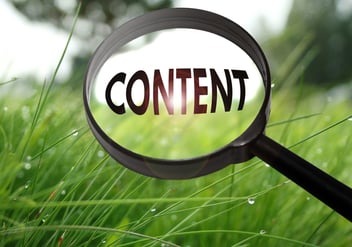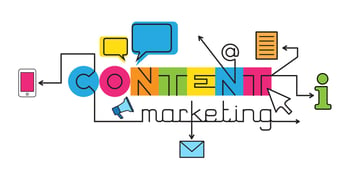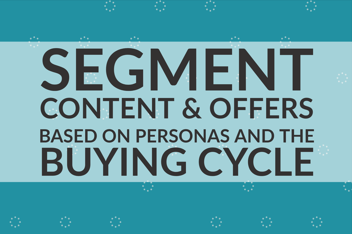Your Content Creation Checklist For Writing Product Features Sheets
.jpg?width=550&name=Jones_may_blog_headers_product_features_checklist%20(1).jpg)
Complete integrated marketing campaigns require a wide range of content targeted to fit the needs of prospects and customers throughout the buying cycle, from initially generating awareness of your brand and products to providing the sales enablement content and detailed information leads needed to make a final purchase decision.
In the middle of that buying cycle, in the consideration stage, one key content piece to have available is the product feature sheet (or brochure or webpage—deploy the same basic content in multiple formats to suit varying preferences among your prospects).
The following checklist can be used as a starting point to guide your content creation team in developing product features and assets that key in on how your product or service makes life easier for your ideal customer.
Before writing:
A few preliminary steps that should be taken before any actual content creation begins will lay the foundation for creating a powerful asset that is ready to hit the mark.
Identify the targeted customer persona(s) or audience: Understanding who you are trying to reach, and what that buyer persona’s most urgent pain points are, will help you create content that resonates and is relevant. Consider that the audience for your marketing message may be a decision maker who doesn’t actually use the product, but who does have challenges that the product can address. An example would be the hospital CFO who is involved in the decision to purchase a specific registration software solution. If that individual doesn’t use the software, he or she does rely on it helping to address problems such as bill collection and cash flow.
Gather resources to leverage during content development: Have the needed information and supporting material ready before starting to write. This could include not only the product or service specifications, but also interviews with developers, how-to videos and virtual tours, survey information pertinent to the target audience, and competitor research.
Identify the stage of the buying cycle to be reached: Most often, this type of content will be targeted to the consideration stage, where leads are actively seeking a solution, but may still be comparing options and gathering information, but not ready to make a commitment.
Writing the text:
Once you start writing, consider these best practices for developing product feature sheets and similar content that will be user-friendly, targeted, and compelling.
Use a 10-word or shorter headline that includes at least one keyword. While product features content may not always be housed in a searchable format online, it just makes sense to develop it so that it can easily be added in that way. The keyword should be something your customer is likely to search for when trying to solve the problem your product or service addresses.
Include a brief introduction (45-60 words) that sets up the reason for using the product. You only have a few seconds to capture the reader’s attention so this is the place to highlight the relevance of “why” rather than begin listing all of the “what” specifications and details.
Write a high-level product description that explains what the product is and what it does. Once you’ve quickly explained why, in the customers’ terms, they should use your product or service (aka how it makes life easier), then you can provide a broader description of the product or service. But still keep it under 150 words. This is a middle-of-the-funnel content piece targeting prospects who are researching, but likely not committing hours to reading detailed specs.
Select three to four key features to highlight with a one- to three-sentence description of each. Keep it concise and descriptive. Don’t fall into flowery circular talking points or hyperbole. Think short and powerful.
Develop four to six user benefits that match audience pain points. These will be the “meat” of your content. Your readers don’t just want to know what the product features are, they want to know how those features make their lives and jobs easier. A simple example from a recent purchase I made: The feature of the sports duffel was a shoe pocket; the user benefit was no more shoving dirty, stinky shoes into the same part of my bag as my clothes on the way out the door to a workout.
State each benefit in 5 words or less. These quick benefit statements, as concise and specific as possible, should be aligned with the messaging your brand uses and ready to be repurposed as headings, search terms or even hashtags. Avoid using “very” and its synonyms as modifiers—the software is not “extremely user-friendly,” it is “seamless and intuitive.”
Include 60-85 words of copy about each benefit and how the product solves problems for users. This is where you state the problem that is vexing your customer and explain the solution. Use the same vocabulary your customer would use and show how the features translate into benefits.
Provide a source for pricing information. This could mean including basic pricing information directly in the content piece or providing a link to a website or separate document. Transparency at this point can help ensure that leads are qualified before moving them on the sales by weeding out those for whom your solution may not fit the available budget.
Tell readers how to buy the product or service. It may sound obvious, but it is shocking how often content in the middle of the sales funnel may fail to make it clear.
Include a call-to-action that encourages readers to take action. Even if the expected action isn’t an immediate purchase, include a CTA with the action you want prospects and leads to take at this point, which could include scheduling a demo, requesting a consultation, or downloading additional case studies and testimonials.
Write a related promotional blurb for use on social media, the company website and in emails. This collateral content is part of preparing an asset to be used in a cohesive campaign. It should be 50 or fewer words and link to the location of the product features content—whether that is a website page or a PDF download.
Identify and list two additional marketing resources as recommended reading from the same marketing/buying cycle phase. Because this content piece is primarily targeting the middle of the funnel (consideration phase), providing additional content is important in continuing engagement with leads who are still gathering information and not yet ready to talk with a sales representative or make a purchase decision.
Identify and list one additional resource as recommended reading from the next level of the buying cycle. As with above, this is a way of keeping your reader engaged, while also gauging whether they are moving through the sales funnel and may be nearing the point of being marketing-qualified to shift on to sales.
Review your writing
Before turning your content over to the next person up the chain, take the time for an objective review of what you have created. I prefer to let what I’ve written set overnight before going back to review, proofread and edit—if time allows. I’m more likely to see where there are errors, holes that should be filled or phrases that can be written more concisely and compellingly.
If you can check off all of the following with an affirmative, well done.
Did you …
- Use words that buyers use to describe benefits, without throwing in industry jargon?
- Show benefits in terms of business value, such as cost savings or improved productivity and reliability, and focused on the customers’ needs?
- Keep the ideal audience (aka buyer persona) in mind?
- Include company contact information?
- Follow company branding guidelines and style guide?
- Edit copy for grammatical and spelling errors, including using a consistent verb tense throughout?
- Stay within the word count requirements (typically 1,000 words or less total)?
- Leverage company expertise, insights and research in the copy?
- Source information and statistics correctly?
- Test all links and URLs to ensure they work correctly?
After your review, the text is ready for the next level, including design and implementation.
Product feature sheets are a vital resource for your prospects and leads as they research solutions, as well as being a valuable tool for sales enablement for your sales team to have at the ready.
Check out other content creation checklists we’ve shared on the blog to help marketing and PR teams finetune their craft and return more first drafts in nearly-final form.
- Marketing Email Checklist
- Website Copy Checklist
- Business Blog Post Checklist
- Thought Leadership Article Checklist
Content creation is consistently ranked as one of the biggest challenges marketing managers and CMO face, and we understand why. Check out our solutions to the content creation dilemma in our Problem/Solution Sheet for tips to tackling the challenge.
If your team needs more help more quickly than these checklists and our management suggestions can provide, maybe it’s time to consider partnering with an agency that specializes in creating complete campaign content based on inbound marketing strategies. Schedule a time in my calendar to chat about what JONES can do to supplement your marketing team and generate results.
-1.png?width=1652&height=294&name=Jones(RGB)-1.png)

.jpg)










